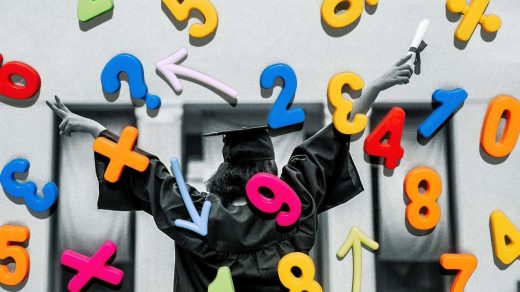Applying to college? Here’s what to know about the new financial aid formula and revamped FAFSA
Whether you’ve experienced the FAFSA application—that’s short for Free Application for Federal Student Aid—as a student or parent, pretty much everyone can agree that making it through the very detailed paperwork can be a slog.
Historically, the application has been long and required lots of research and information collection. But it’s also been the only way for students to collect any federal aid money, and a mistake such as missing the application deadline can seriously cost families.
Now FAFSA has announced a new formula for calculating aid, as well as other changes that will make the process less of a headache for everyone involved. These simplifications are a result of the Consolidated Appropriations Act, which was passed in 2020.
Here are the big changes that will take place this year.
Filing timeline
First and foremost, it’s important to know the date when you can start accessing applications, and this year it’s two months later than in past years. For the 2024-2025 school year, applications will open December 1, but the deadline for submitting them remains the same: by June 30, 2024, at 11:59 p.m. CT. This means applicants have a shorter window of time for completing and submitting applications. (According to the Education Department, the delay is the result of revamping the application and other improvements and that it will return to the October 1 start date for the following school year.)
The Student Aid Index
One of the biggest changes will be the way the application determines affordability, a process now called the Student Aid Index. This change will make it easier to complete the FAFSA as it reduces the number of questions to be answered.
Instead of considering multiple factors in addition to income, such as how many people are in the household and how many of those people are in college, the new application will rely more on tax information that’s pulled directly from the IRS, specifically from tax returns for 2022. From there, they will estimate how much the family can afford to pay.
Goodbye to the sibling discount
FAFSA has always given families with multiple children in college a little extra help. But starting with the 2024-2025 school year, that “sibling discount” will no longer exist.
This will mostly impact middle- and higher-income families, who are likely to have the means to send multiple children to college at the same time and had been counting on some significant federal help. It won’t have as much of an impact on lower-income families.
Higher-eligibility threshold
If the sibling discount has you feeling concerned, this new change may be uplifting. The new application raises the family income threshold, which means that more than half a million additional students will qualify for aid in the form of a Pell Grant.
This grant has typically only been available to lower-income families. While the amount of money that students receive through this grant is still based on family income and expected contributions, it will definitely allow more people to qualify for aid.
Note: Apply early
It’s still important to get your FAFSA application in as quickly as possible, as many of the federal aid programs operate on a first-come, first-serve basis.
(4)



